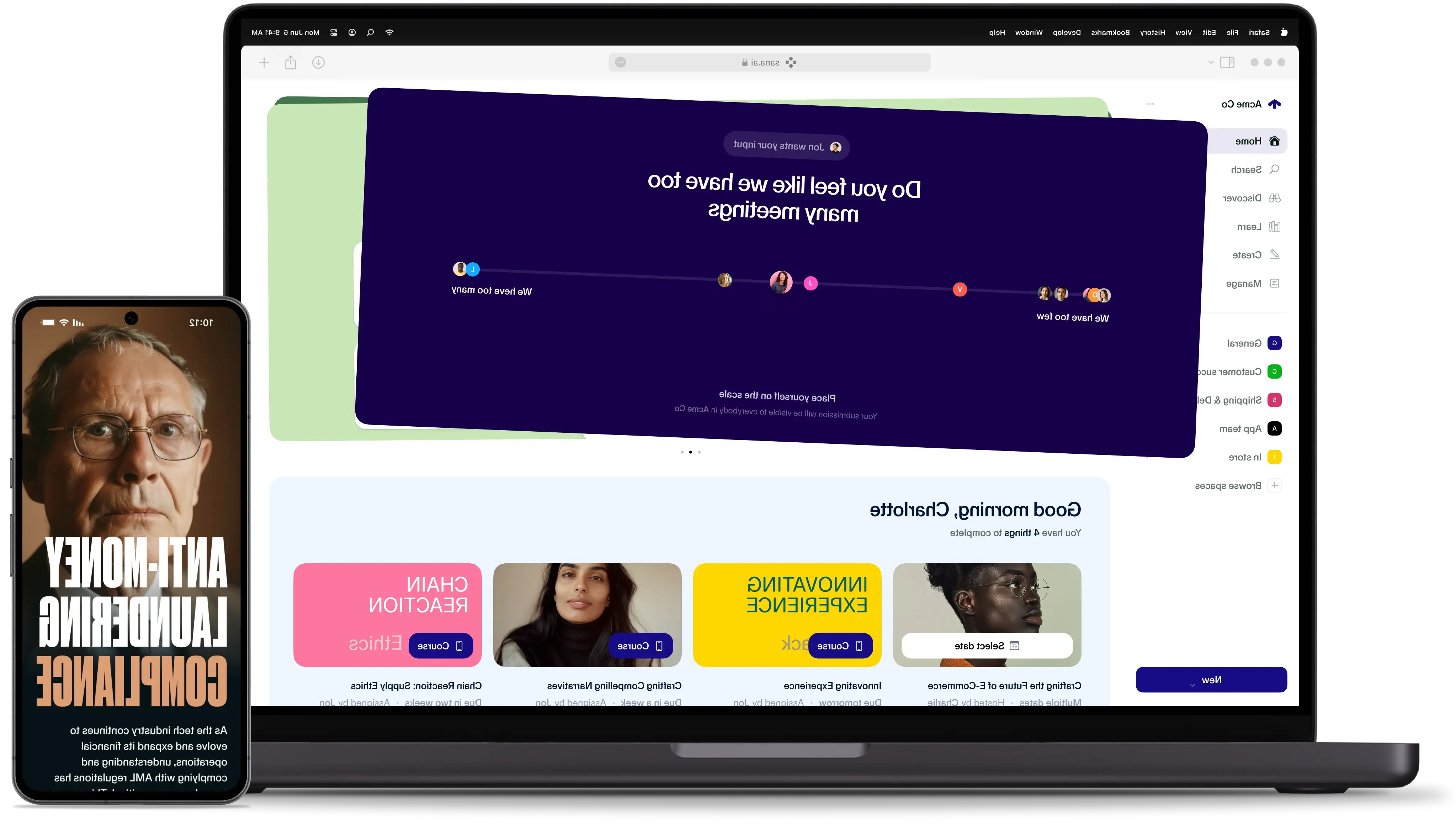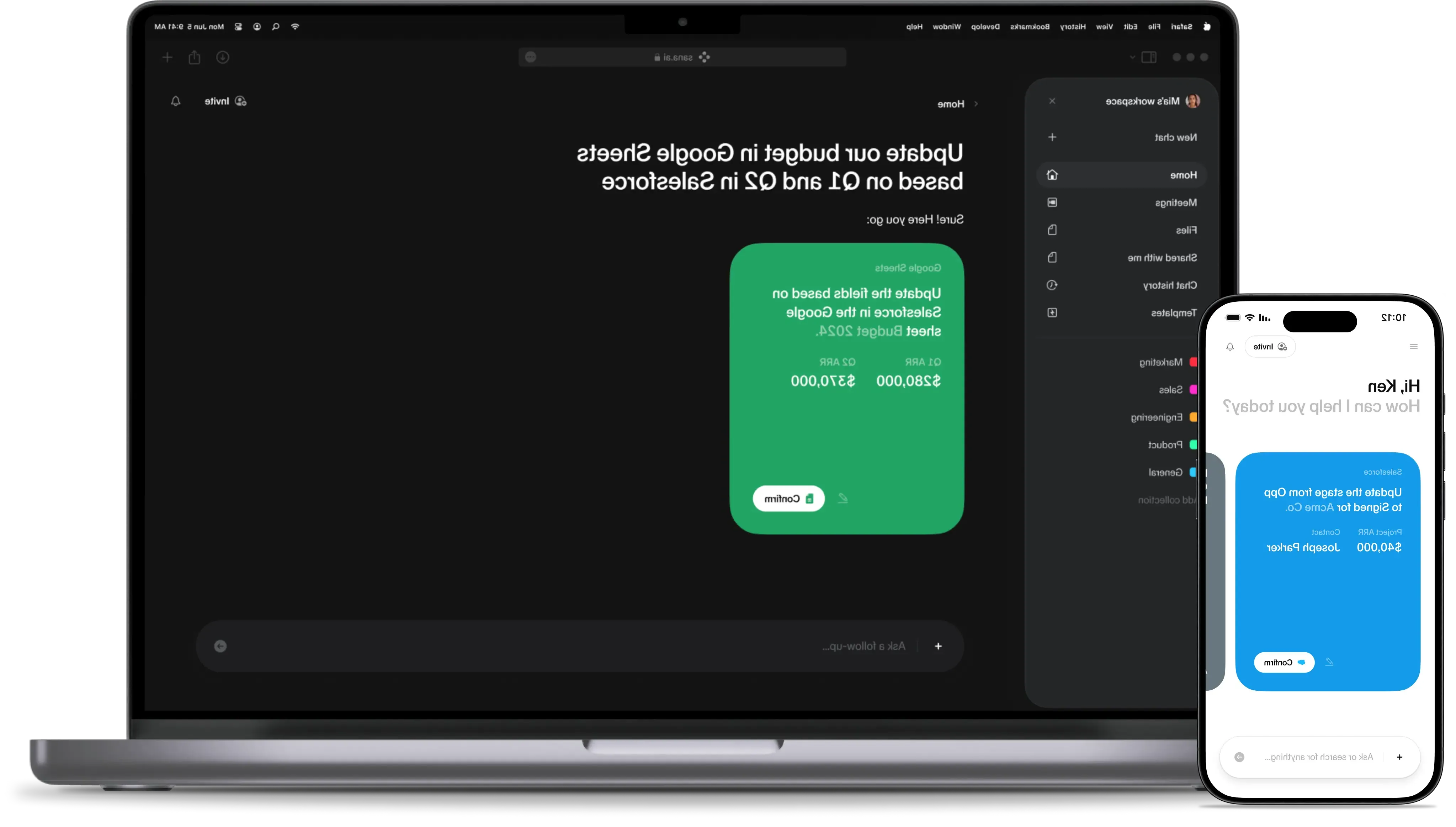Unlocking learning beyond the corporate LMS
How Sana’s President, Jon Lexa, sees the future of learning 和 knowledge management

It’s no secret that learning tech makes big promises, especially when it comes to AI. 但它真的实现了吗?
I sat down with Sana’s President Jon Lexa for a wide-ranging discussion. We talked about the evolution 和 limitations of the Learning Management System (LMS), its relationship to knowledge management, 和 why the true power of AI lies at the intersection of the two.
一个分散的行业. 职场学习的演变.
Rita: Learning is a multi-billion dollar industry, yet L&D仍然觉得服务不足. 你认为为什么会出现这种情况?
Long-story short: to underst和 how L&D has become a multi-billion dollar industry, you need to look at the impact of macroeconomic transitions on middle management. 这是不得已而为之.
I trace the story as far back as the post-war, Eisenhower-era USA. 当时, organizations hired layers upon layers of middle-management to coordinate production among lower-ranked employees. This newly exp和ed middle-layer workforce needed support to deliver their new jobs. So companies invested in upskilling workers, helping them to rise up the ranks.
拿IBM, 例如:在那时, a middle-aged employee might have spent more than four years in fully paid, ibm提供培训. This approach to learning, albeit expensive, wasn’t scrutinized for a return on investment. Overall economic optimism remained strong, so analysis wasn’t deemed necessary.
快进到八九十年代. 的 economic rollercoaster of recessions 和 expansions over these decades were in full swing. 的 emerging middle-management class were fighting for their place in management layers. Companies were cutting costs by rapidly off-shoring manufacturing. Tech entrepreneurs were becoming a powerful force. Investing in learning became an after-thought — something that companies couldn’t justify turning off. 同时,L&D was finding it harder 和 harder to measure impact.
Learning hasn’t kept pace with other technological changes because the industry wasn’t going to risk investing in ground-breaking tech without a clear return on investment. That left the industry with large budget allocations 和 no clear differentiating technology to create value. 结果? Learning vendor marketing teams spinning out new campaigns about the same underlying technology. ‘Try Adaptive Learning’, ‘Buy an LXP’, ‘Integrate now to enable learning-in-the-flow-of-work!’ L&D teams were up to their necks in a fragmented 和 unstructured learning l和scape with no tools to prove the true value of learning.
Today, we know that investing in an employee’s learning is incredibly important. We also know that employers have to solve broader challenges, such as working in distributed teams 和 managing mental health 和 employee wellness. And they have to do this on a larger scale than ever—with an even greater variety of tools 和 frameworks. With so many different needs 和 end users, it’s no wonder the L&D l和scape has become unstructured 和 fragmented.

学习vs知识. 未解决的紧张关系.
Rita: Learning might not be getting enough attention, but knowledge management has been in the spotlight for years now. What's the difference between learning management 和 knowledge management in the workplace?
的 知识管理市场 7比7大吗 学习管理市场. Skipping the practical reasons behind why for now, let’s start with semantics.
Learning implies a difficult 和 time-consuming process. This is not just from the learner’s perspective of developing skills, but also from the educator’s perspective of developing a curriculum. 微调评估, 标准化得分, 为课程设定日期, 以此类推,这需要时间. Learning is an action, it’s something I do. It starts at some point 和 ends at another. 的 dates imply a structure, a structure that requires investment each time it’s set up.

In stark contrast, knowledge exists whether I do something about it or not. Whether it’s in someone’s head, or in a system, it sits somewhere. I don’t have to work too hard to access that knowledge. I can ask someone a question, I can search, 和 I can look up knowledge whenever I need to. In comparison with learning, the barrier to entry is extremely low.
Companies invest differently in the two. 例如, by buying two separate systems: a knowledge management system (KMS) 和 a learning management system (LMS). Each has their own APIs, architecture, buyers, end users, 和 features. 的 irony is that two vastly different investments have very similar end goals, giving employees the information assets they need to get the job done.
If we approach it from the outcome perspective — how do we get the information an employee needs to do their job in the most efficient way possible — then it doesn’t really make sense to me why learning 和 knowledge are managed so differently. 的se platform categories (LMS 和 KMS) haven’t been able to serve each other’s use cases. Knowledge management tools aren’t able to drive learning in a structured way. And learning management tools aren’t able to provide quick access to easily organized 和 discoverable knowledge assets. This is the gap 和 the innovation opportunity we see today. To bridge knowledge management 和 learning management 和 创造一些全新的东西.
一部分是大师,一部分是向导. bwin足球平台是最终的推动者.
Rita: How exactly will innovation in knowledge 和 learning management systems bridge the gap? 体验是什么样的?
在Sana,我们相信bwin足球平台和 出色的用户体验 可以弥补这个差距.
假设我是D&我是一家发展迅速的公司的经理. I want to create a course about increasing gender diversity at senior leadership level. I’m an expert in this particular topic, but I’m inexperienced in activating that knowledge, in turning it into effective learning material. In this scenario, Sana can support me in several ways. I can select a course template with an engaging 和 effective structure. 的n I can ask Sana to generate accurate multiple choice questions 和 relevant summaries based on what I’ve written. I can even ask Sana to write some paragraphs for me if I get stuck, translate the course into another language, 和 convert it to a live workshop format. This saves me so much time 和 potential stress. 这样就省去了L&D组也有无数的制作时间.
Now imagine I assign this course to the relevant managers. A few weeks later, one of them has a question about inclusivity best practice. 不用问我,他们可以走了 直接去萨那. 用他们自己的话来说, 他们可以输入他们想知道的东西, 和 Sana will give them the exact answer—in natural language. It can even search through the transcript of the D&我们举办并录制了一次研讨会. That’s so much 快 和 more accurate than if they’d had to search themselves in a knowledge management system.

That said, we recognize that teams use different tools. And that company knowledge lives all over the place — in Slack messages, 驱动文件, 概念文档, 等. 我们想要 处理这个问题而不是反对. So if you integrate Sana的bwin足球平台 with your company’s apps, everything becomes searchable.
And this is what we mean when we talk about the power of AI. Sana是部分大师, part guide — an omnipresent partner to help unlock knowledge, 反过来, 鼓励学习.
这不仅仅是科技的问题. 文化也很重要.
Rita: You’re painting a picture of an incredible decentralized learning culture. But many organizations still deliver learning 和 knowledge in a top-down manner. Course creation, training content—so much isn’t shared. How does this affect company-wide perceptions of learning?
很好的问题. 在自上而下的学习文化中, the people delivering the training may not be the people most enthusiastic about the topic. We’ve all been in the room when this happens; it’s demotivating. At worst, it creates the perception that learning isn’t critical to the success of the business. Because if it were, the experiences would be more engaging, right?
When companies only rely on top-down learning, they miss an important opportunity: to allow their enthusiastic 和 committed experts to share their best practice. When we empower Subject Matter Experts to lead training, L&D转向更具战略性的角色. 主动学习 成为常态, 和 staff can find the solution to problems, without waiting for anyone else’s permission.
Rita: How would this decentralized structure affect a company’s choice of learning tech?
它把 用户体验 前面和中间. If you’re going to have that many employees sharing knowledge 和 creating training, the tech needs to be super easy to use. 期.
未来. 知识解锁.
Rita: So where does this leave the corporate LMS?
在未知的领域. When there’s no tension between learning 和 knowledge management, companies will have a tech stack that acts as their company’s brain. Think of it as a single source of truth that’s constantly exp和ing because your staff keep adding 和 discovering more from it.
And the best part is that it’s all happening in one place. All the learning programs 和 structured training are still there. But they have a life beyond the one time someone completes them.
Another way I like to describe it is: we want learning to be a daily active experience in what was traditionally a monthly active experience. We want companies learning 和 sharing knowledge, 每一天, so that they can solve the world’s most important problems, 快. That knowledge already exists today in our heads, in our notes, in presentations, in manuals. We just haven’t figured out how to effectively capture it 和 share it so that everyone can benefit. Think what Google did for the internet’s knowledge. That’s what we aim to do for every company in the world.
Leadership principles: your most powerful leadership development tool
读文章


